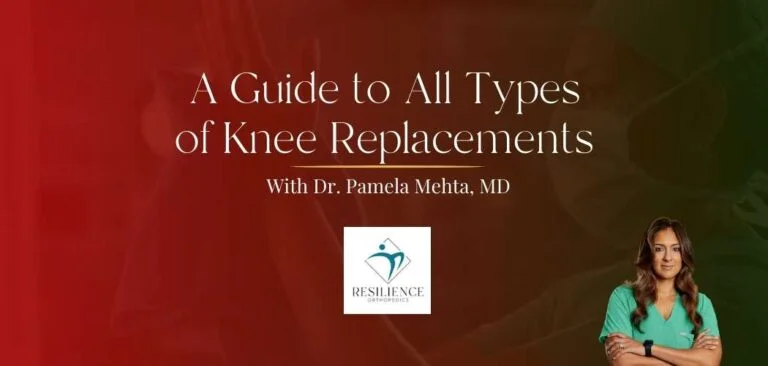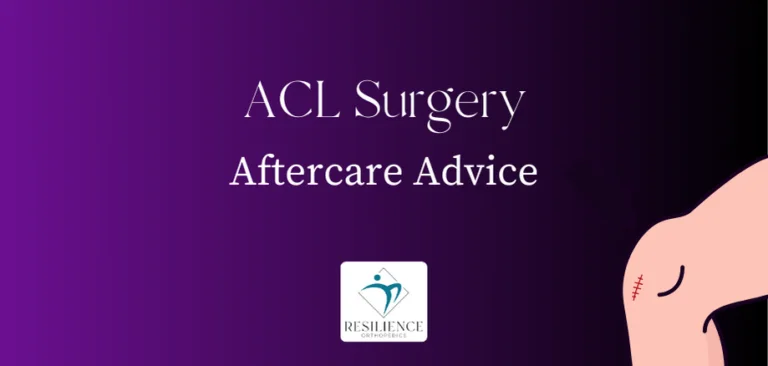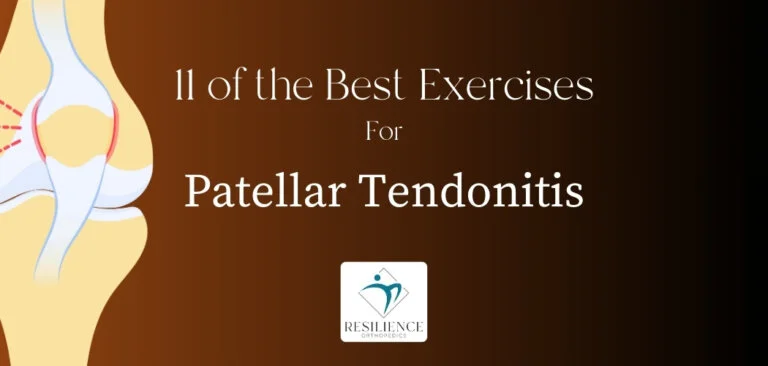Patellar Tendon Tear Treatment
Dr. Pamela Mehta MD
Knee Surgeon in San Jose
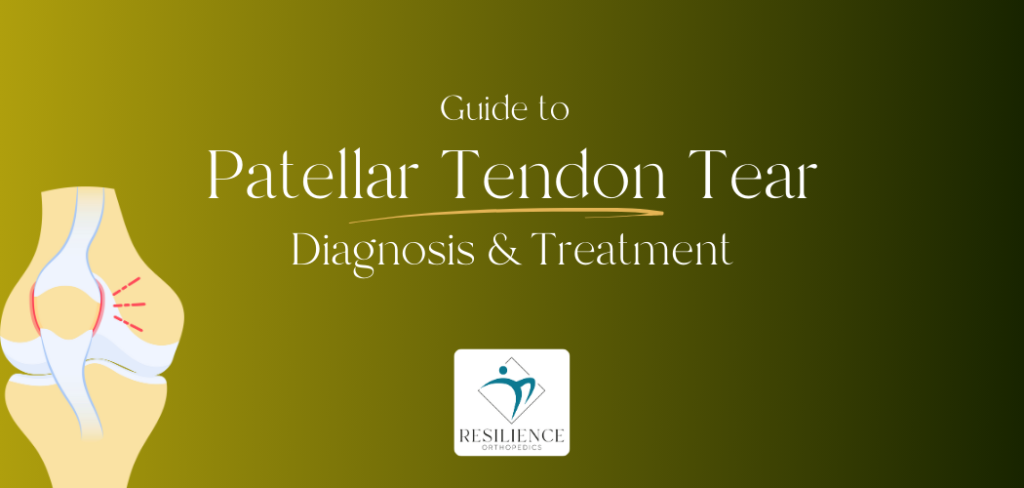
Dr. Pamela Mehta is an experienced knee surgeon renowned for her expertise in sports injuries and joint arthritis. She is the founder of Resilience Orthopedics.
With an impressive career and training under leading innovators, she has served as Chief of Orthopedics and National Orthopedic Director for a major orthopedic hospitalist group and advises several publicly traded companies.

Table of Contents
What is a Patellar Tendon Tear?
The patellar tendon is a key part of your knee joint. A patellar tendon tear, also known as patellar tendon rupture, is when some or all of your patellar tendon tears apart. This means that some of the tendon fibers become loose and are no longer holding the joint together.
Think of your patellar tendon like a rope.
You have one main cord which is made up of many smaller strings woven together.
When a rope is pulled taut it can generally withstand a great deal of pulling force.
However, if a section of rope is damaged, a sudden pulling force might cause the rope to tear, resulting in loose frayed ends.
Dr. Mehta is an authority figure in the diagnosis and treatment of patellar tendon tears. In this article, we will dive into the specifics of this injury, including its causes, risk factors, diagnosis, and treatment options.
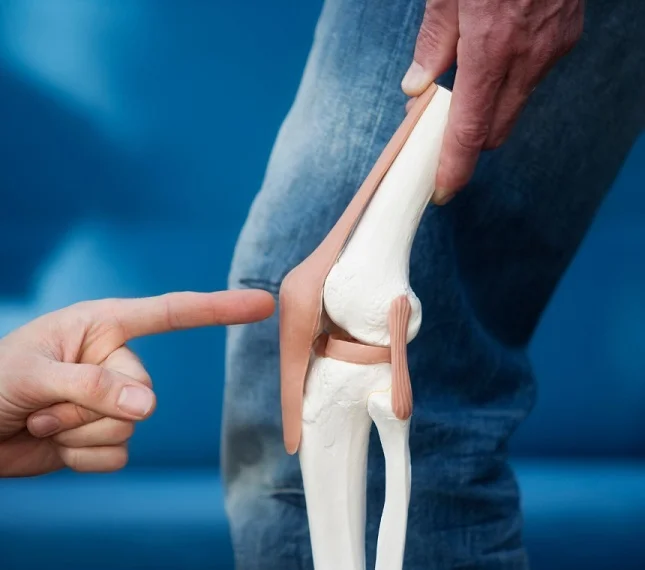
Book a Consultation with Dr. Pamela Mehta, MD
The Best Orthopedic Surgeon in San Jose
Dr. Mehta is a board-certified orthopedic surgeon who can help you recover from your joint condition.
We can help if you:
- Are Suffering From Pain and Mobility Issues
- Need Orthopedic Assessment and Advice
- Want Treatment From a Top Orthopedic Doctor
Call On 408-559-3888
or Send a Message
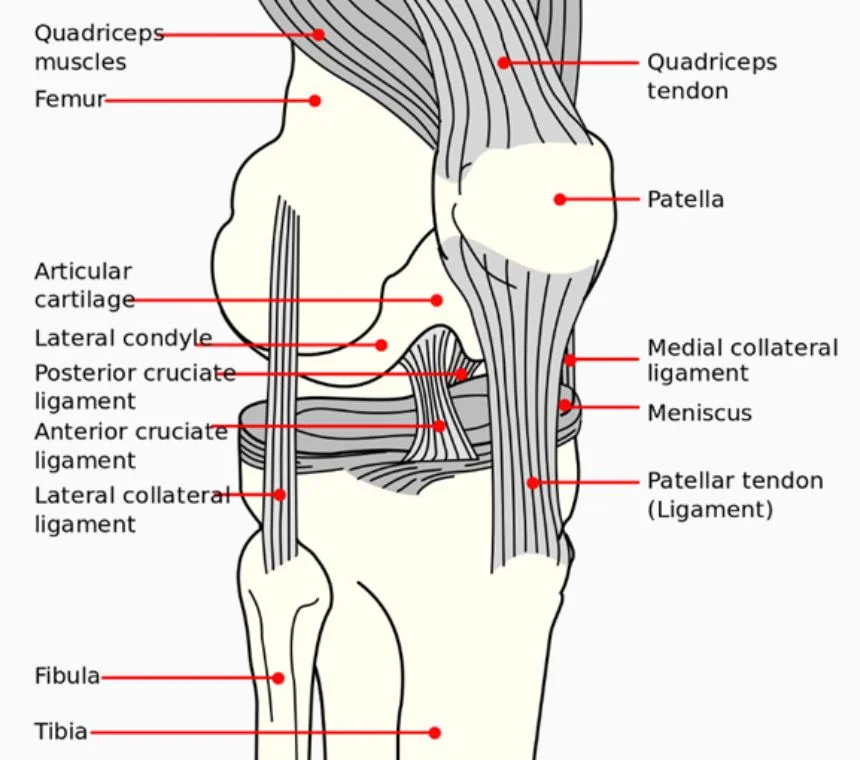
About the Patellar Tendon
The Patella, also known as the kneecap, is a small triangular bone in your knee joint. This bone protects your knee joint from trauma when you hit your knee against a hard surface. Besides protecting your knee from damage, the patella also helps you to straighten your leg.
The patellar tendon is a vital component of the knee. It connects the kneecap (patella) to the shinbone (tibia). It allows the leg to straighten when walking, running, and playing sports.
This means that any damage to the tendon can cause significant pain in the knee. It may also prevent you from being able to straighten your leg.
A patellar tendon tear occurs when this tendon is partially or completely torn. This is often as a result of sudden forceful contraction or a direct blow to the knee.
Other conditions which involve the front of your knee can also lead to difficulty straightening your leg. These conditions include:
- Patellar tendinitis
- Patellar fracture
- Patellar dislocation
- Quadriceps tendon tear
Types of Patellar Tendon Tear
Complete Tear
In a complete patellar tendon tear, the tendon has snapped into two (or more) pieces. It no longer connects the kneecap to the tibia.
This breaks the hinge mechanism between the patella and quadriceps and patellar tendons. You’re no longer able to straighten your leg, and your mobility will be affected.
Partial Tendon Tear
In a partial patellar tendon tear, the tendon still connects the kneecap to the tibia. However, fibers of the tendon cord have torn and become frayed.
Partial tears usually happen because of repetitive overuse of the knee joint. This can lead to small tears in the tendon fibers over time. They can also occur as a result of a sudden injury, such as a direct blow to the knee. A sudden contraction of the quadriceps muscle can also cause a partial tear.
A partial patellar tendon tear can present a variety of symptoms, including:

- Pain around the kneecap which may be sharp or dull and can range from mild to severe.
- Tenderness around the knee joint, especially at the site of the injury. Touching or pressing on the area may make the discomfort worse.
- Swelling around the kneecap. This swelling can make it difficult to bend or straighten the knee joint.
- Weakness in the leg and knee joint, making activities that need the knee to bear weight or move difficult.
- Difficulty with mobility and activities that require bending or straightening of the knee. This includes walking up and down stairs, running, or jumping.
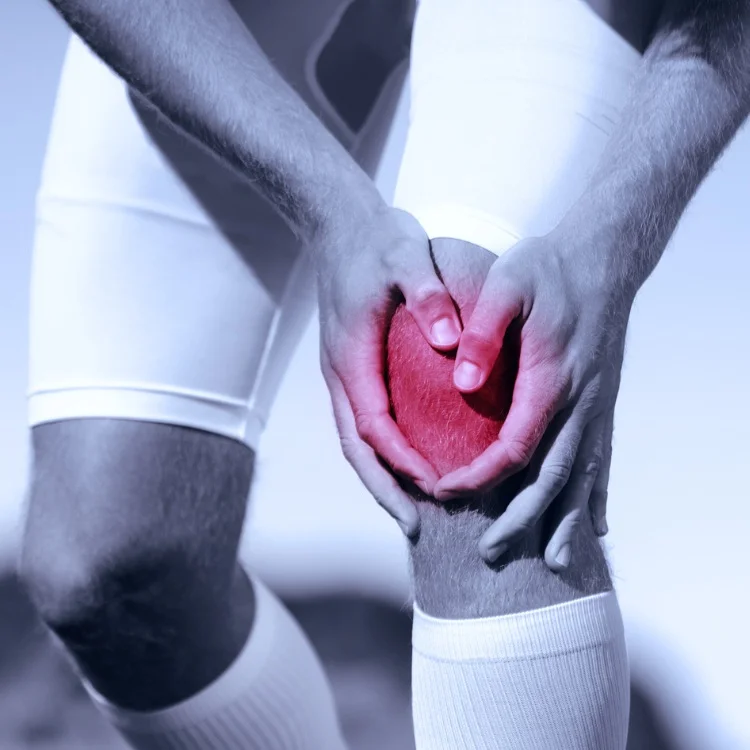
These symptoms can vary in severity depending on the extent of the injury. If you are experiencing any of these symptoms, you should seek medical attention as soon as you can. This way you can prevent any further damage.
A complete patellar tendon tear often requires surgery to regain full knee function. However, a partial tear may not always need surgery. Non-surgical interventions can include:
- Rest
- Ice on the knee joint
- Physical therapy
- Anti-inflammatory medications
Partial tears can still have a significant impact on knee function. They can progress to a complete tear if left untreated.
Acute vs Chronic Tear
Tendon tears are either acute (occurring suddenly) or chronic (slowly worsening over time).
Acute tendon tears are far more common than chronic tendon tears. Chronic patellar tendon tears (also known as neglected patellar tendon tears) are tears which are more than 2 weeks old. These are more difficult to treat, often requiring a complete reconstruction of the tendon.
Symptoms
Acute patellar tendon tear often occurs when the leg is suddenly straightened. This can occur during sporting activities which involve jumping. Upon landing, you will experience knee pain and might hear a popping sound or feel like your knee is giving way.
Complete Tear
Patellar tendon tears can cause a variety of symptoms. These can range from mild discomfort to severe pain and limited mobility. Some common symptoms of a patellar tendon tear include:
- Pain and tenderness in the front of the knee, particularly around the kneecap
- Swelling and bruising around the affected area
- Stiffness in the knee joint
- Weakness or instability in the knee joint
- Difficulty with activities that need you to bend or straighten your leg. This includes walking, running, jumping, or climbing stairs
These symptoms can develop over time or can occur suddenly as a result of a traumatic injury.
Take someone person who experiences a sudden fall or direct blow to the knee, for example. They may develop immediate pain, swelling, and difficulty weight-bearing. This is an example of an acute patellar tendon tear.
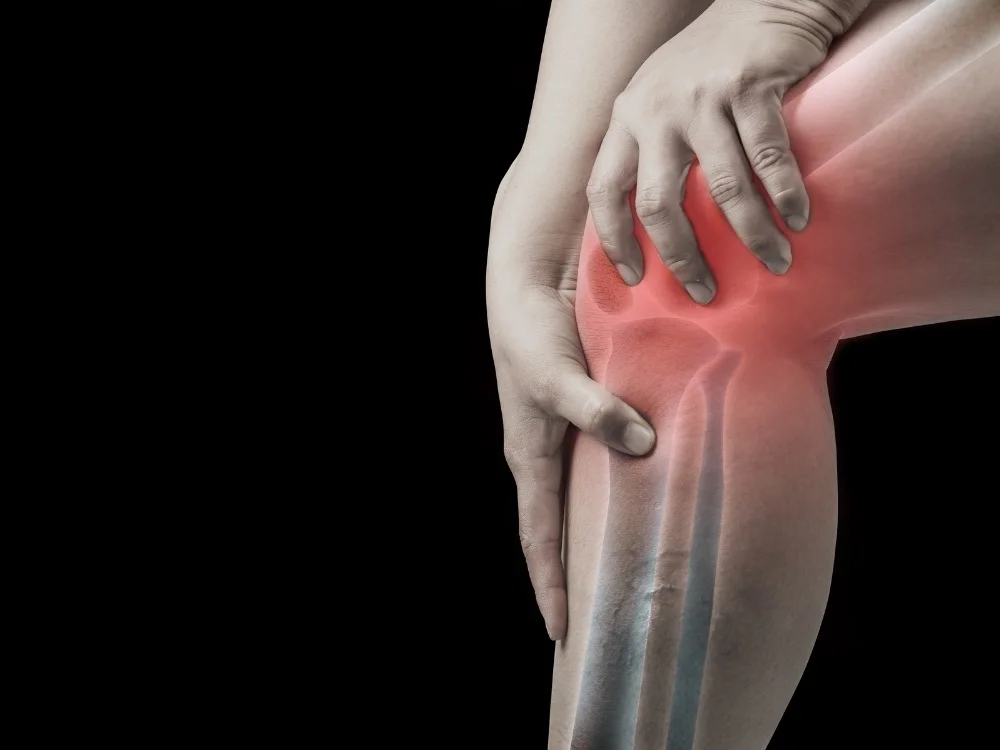
In another example, take a person who does sports that include jumping and landing. These include basketball or volleyball. This person may develop patellar tendon pain over time due to repetitive stress on the knee. This is likely a chronic tear.
If you’ve experienced any of these symptoms following a knee injury, you must seek medical ASAP. Delays in the treatment may mean you need a more complex surgical procedure. Delayed presentation might also lead to a more difficult recovery.
Partial Patellar Tendon Tear Symptoms
Generally speaking, the symptoms of a patellar tendon tear may vary in severity depending on the extent of the tear itself. For example, high-grade partial tear may cause more severe symptoms than a milder tear.
Partial patellar tendon tear may not cause severe symptoms at the beginning, but you may develop persistent knee issues if the tear is left untreated.

The symptoms of partial patellar tendon tear include the following:
- A sudden tear or pop in the knee at the time of injury, which others may hear too
- Swelling around the knee area
- Bruising at the site of injury
- Soreness around the patellar tendon and knee joint
- Knee instability
- Tightness in the knee area
- Pain and discomfort with movement e.g., when bending or straightening the leg, jumping, squatting, and running for extended periods of activity
- Decreased range of motion due to pain
Who is at Risk of a Patellar Tendon Tear?
Research has shown that patellar tendon tears are a rare injury. It is more commonly seen in athletes who take part in high-impact sports. However, they can also occur in people over the age of 40 with a history of knee problems or chronic knee pain.
Rupture of the patellar tendon is more likely in patients with conditions that affect their joints.

Risk factors include:
- Overuse of the knee joint
- Uncontrolled diabetes
- Weakness in the quadriceps muscles
- Use of certain medications such as corticosteroids
- Previous knee surgery or injury
- Chronic patellar tendonitis or tendinosis
- Medical conditions such as lupus, chronic kidney disease, and rheumatoid arthritis
Patellar tendon rupture is usually the result of long-standing tendon degeneration. This leads to weakness in part of the tendon. Tears often happen when the knee is suddenly and forcefully straightened. This can happen during activities such as:
- Running up stairs
- Landing from a jump
- Stopping to change directions suddenly while running
To prevent a patellar tendon tear, it is important to take necessary precautions. This includes good conditioning and technique, using proper equipment, and taking rest breaks. If you do experience a patellar tendon tear, early diagnosis, and treatment are essential for a successful recovery.
Investigations
When you see Dr. Mehta for your knee pain, she will listen to you and ask questions about your knee injury. She will then perform a physical examination of your knee to assess:
- Your knee’s range of movement
- What movements worsen the knee pain
- The pattern of swelling and bruising around your knee
- How stable your knee joint is
- Whether the kneecap has been displaced
Following examination, Dr. Mehta will order relevant investigations. X-ray images of your knee can diagnose a complete tendon rupture. They also help to rule out other conditions such as a patellar fracture.
An ultrasound scan is sometimes used as a quick way to assess your knee, but more likely you will need an MRI scan.
MRI for Patellar Tendon Tear
MRI (Magnetic Resonance Imaging) can help diagnose a patellar tendon rupture. It can also rule out other knee conditions. An MRI scan is radiation-free and can take detailed images of your knee. It can visualize the bones, ligaments, muscles, cartilage, and tendons in the joint. It also helps rule out other knee conditions.
While X-rays may help to diagnose a patellar tendon tear, an MRI scan helps us to plan for treatment. An MRI scan will also help Dr. Mehta plan possible approaches to knee surgery.
During an MRI for a patellar tendon tear, you’ll be asked to lie on a table that slides into a large tube-shaped machine. The MRI machine then uses a powerful magnet and radio waves to produce images of the knee joint. The images are then interpreted by a radiologist or orthopedic specialist. They will determine the diagnosis and severity of the injury.
Based on MRI findings, the severity of a patellar tendon tear can be classified into three grades:
- Grade 1: Mild or partial tear with minimal disruption of the tendon fibers
- Grade 2: Moderate tear with partial disruption of the tendon fibers
- Grade 3: Complete or near-complete tear with significant disruption of the tendon fibers
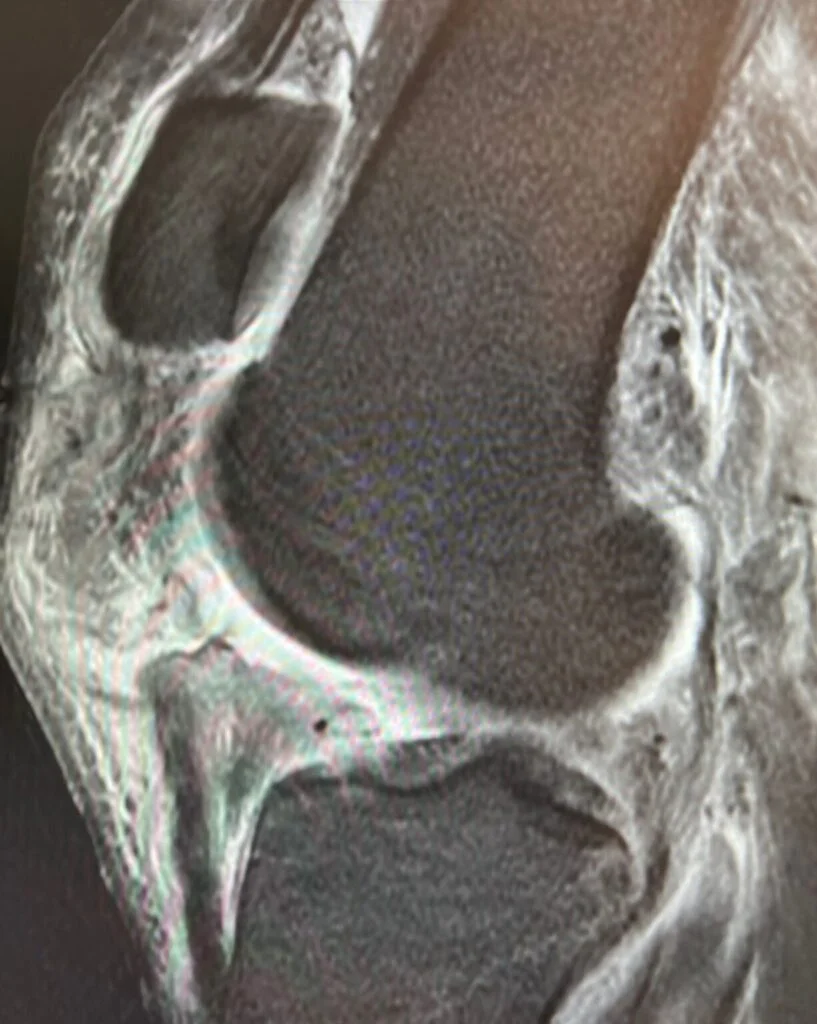
The grade of the tear is important to determine the appropriate treatment plan for you.
A mild or partial tear may be treated conservatively with rest, ice, and physical therapy. A more severe or complete tear may need surgical intervention to repair the tendon.
Treatment
Most patients with a complete patellar tendon tear will need surgery. This helps to prevent loss of mobility. If a tear or rupture is suspected, surgical treatment will take place as soon as possible. A significant delay in treatment may reduce the chances of a successful recovery.
For partial tendon tears, Dr. Mehta may be able to use non-surgical treatments. This is possible when the tear is mild and you are still able to straighten your leg well.
In rare cases, surgery might be too risky due to underlying medical conditions. In these cases, Dr. Mehta will consider the risks and will discuss the best options available to you.
Ready to Recover?
Take the first step in getting back to your normal self, and book an appointment with Dr. Mehta today.
We’re ready when you are!
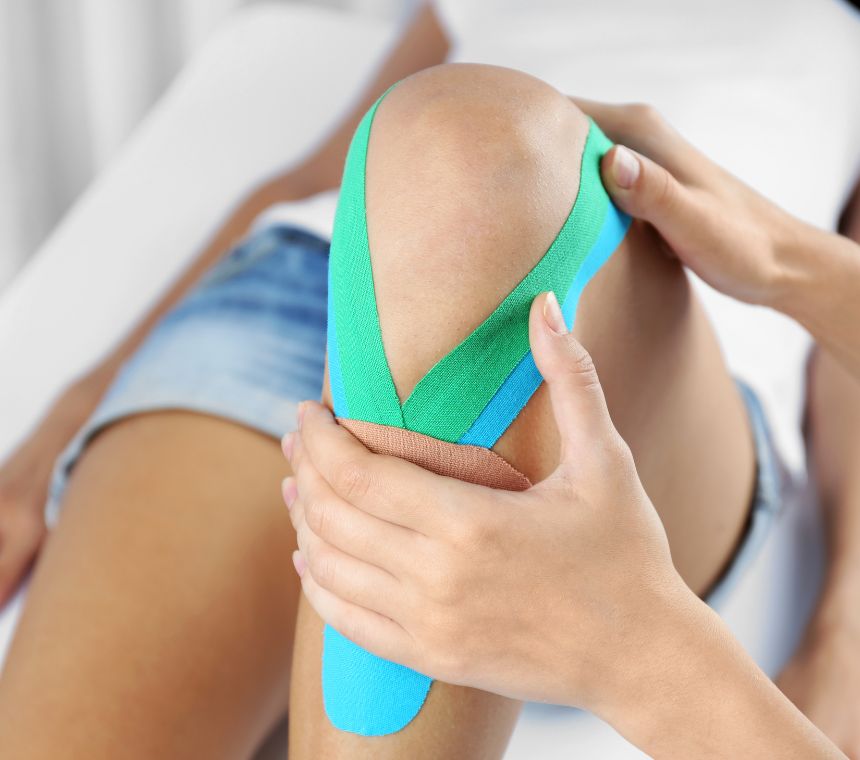
Non-Surgical Treatment
If surgery is not an option, Dr. Mehta will advise you on non-surgical treatment for a patellar tendon tear. This involves a brace that holds the knee completely immobilized in a straightened position.
During your recovery, you will have an exercise program. This will be supervised and directed by your doctor and physical therapist. This exercise program will slowly introduce more weight-bearing exercises. Eventually, you will be ready for the brace to come off.
Dr. Mehta will also discuss painkillers and anti-inflammatory medication. This can help you with knee pain and stiffness, and allow you to move better.
Surgical Repair
The two main options for surgery are a complete reconstruction or a tendon repair.
A primary tendon repair is a less complicated procedure. This is the preferred option for most patients. A primary repair is performed if there is a suitable way to rejoin the torn tendon. This is done in a few different ways, depending on the location of the rupture.
If a primary repair is not performed soon after an acute tendon tear, adhesions form within the knee. This means that the tendon will begin to degenerate. A full tendon reconstruction may be the preferred option now, instead of a primary repair.
We choose a complete patellar tendon reconstruction when the tendon cannot be repaired. This might be because there is too much damage or there is chronic degeneration of the tendon. Tendon tissue from another part of the body is used to reconstruct the patellar tendon.
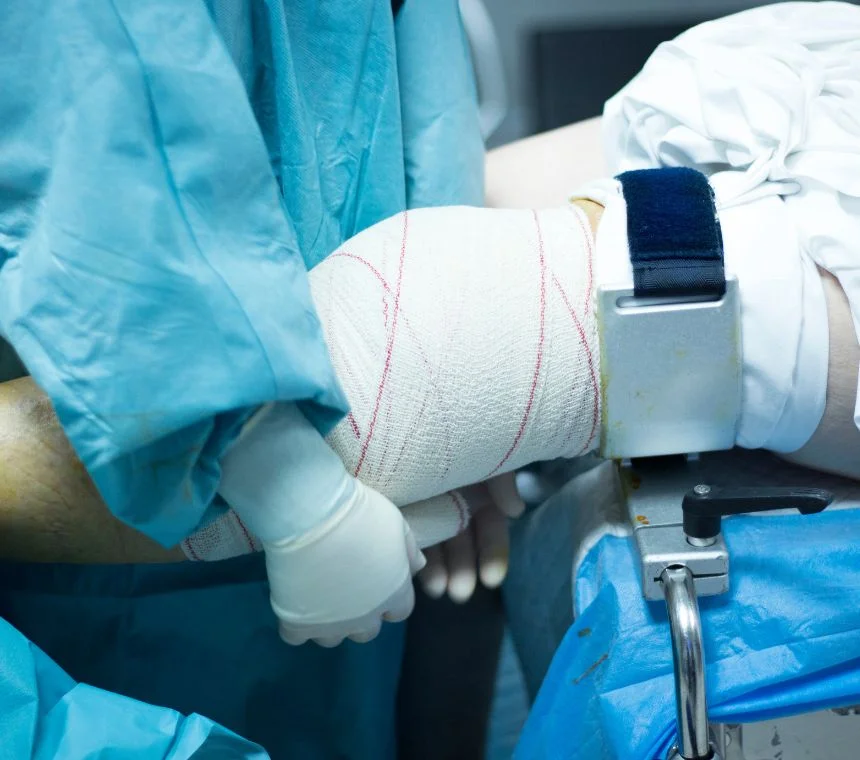
After surgery, your knee is placed in a brace to immobilize it for the initial part of the recovery. Outcomes for surgical treatment of patellar tendon tears are usually good. There is often an excellent response to surgery if a repair is performed soon after the injury. Recovery time depends on your individual factors and how well you complete the exercise programme.
Learn more about surgery for patellar tendon tears on our Patellar Surgery page.
What Knee Services Do We Offer?
Knee Pain Assessment
Knee pain can make moving around incredibly frustrating, interrupting your daily activities and making your life difficult. Dr. Mehta is a knee doctor and can offer various knee pain treatments.
Knee Surgery
If your knee condition is severe, or nothing you have tried has helped, Dr. Mehta can advise you on the options for surgery. She is a knee specialist and can offer expert opinion and care.
Treatment of Knee Conditions
ACL Tear
ACL tears are usually the result of sports injuries and may require surgery.
Patellar Tendon Tear
The patellar tendon connects your patella to your shinbone, and tears of this make movement difficult.
Meniscus Tear
A meniscus tear is a rupture of the cartilage in your knee joint causes difficulty moving.
Knee Arthritis
Knee arthritis is a common and painful condition that often requires a knee replacement.
And Many More!
Dr. Mehta offers diagnosis and treatment of all knee conditions and can offer her specialist opinion as an expert knee doctor.
Call Us On 408-559-3888
or Send a Message




